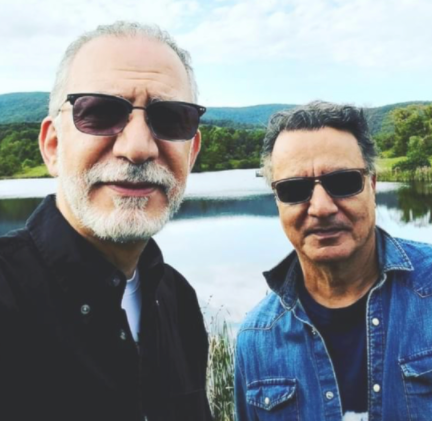September 03 2021

MINBASHIAN. . . grandfather
Sepehr Haddad — the recording artist who co-founded the band Shahin & Sepehr has just released his debut novel, “A Hundred Sweet Promises,” based on a family story told to him by his grandmother shortly before the 1979 revolution.
The plot revolves around Haddad’s grandfather, Nasro-soltan Minbashian, who traveled to Imperial Russia to study music, eventually became the piano tutor of the czar’s niece, and fell in love with her.
Haddad comes from a long line of musicians. His great-grandfather Salar Moazaz Gholam-Reza Minbashian penned the first Iranian national anthem in July 1909 to honor the liberation of Tehran from the military forces of the Russian military governor of Tehran, Colonel Liakhov.
Sepehr Haddad recently told Kayhan London that the central part of his novel happens in 1913, on the eve of World War I.
He explained, “My grandmother revealed this secret about my grandfather’s life to me in 1978, right before the revolution in Iran. Soon after that, I left to go to college in California, and forgot what my grandmother had told me.”
In 2010, he decided to take his American wife and American-born sons to Iran on a visit. “We passed by my grand-mother’s apartment building in Ferdowsi Square, and I suddenly remembered what she had told me. When I told my wife the story, she suggested that I write a book about it.”
He said, “I wrote the book because I wanted to leave behind a document for my children and their children about their Persian side of the family’s achievements in music education in Persia/Iran. But I did not want to write a biography that they might have found dry, or like college classwork. So, to tell the story but make it more palatable to them, and with the general interested public, I decided to write it in novel form. I also tried to intertwine Persian history, poetry, and fables with a historically accurate portrayal of their ancestors’ lives.”
He said both of his sons, Kian and Riyan, have inherited the family musical genes. He said, they “are writing songs together. I wanted them to know about their great-great-grandfather, Salar Moazaz Minbashian, who wrote Iran’s first national anthem in 1909. And, how their great grandfather Nasrosoltan Minbashian studied with the masters of classical music in Russia.”
He said, “When I took them to Iran in 2010 to see the country’s beauty, culture, historical sites, food, people, they loved it as I knew they would. I wanted their understanding of this great culture to be first-hand rather than from the media, which often does not portray Iran’s true beauty and glory.”
Sepehr himself was born in Washington, DC, in 1957, while his father was studying and working there. “In 1965, our family returned to Iran, and I went to Miss Mary (Bahar-e-No) elementary school, then to Iranzamin (Tehran International School), and upon graduation in 1975, I came to the United States for college. I ended up at the University of California at Davis and graduated with a master’s degree in International Agricultural Development.”
In 1988, he moved back to Washington, DC, and began working for the US Environmental Protection Agency (EPA). There, he reconnected with guitarist Shahin Shahida, a schoolmate from his days in Iran, and they formed the band “Shahin & Sepehr,” producing six albums over the years 1994 through 2002.
“All our six albums with Virgin/EMI have been in the Top 20 Billboard charts. Our debut album “One Thousand and One Nights” made it to the #6 spot on Billboard, and our sophomore album “e” was nominated for the “Best New Age” album in 1995.”
Sepehr retired from the EPA in 2015 and spent six years researching and writing the book that was published in March. “The research was the most fun and, at the same time, the most challenging part of writing because I wanted it to be historically accurate, considering the periods I was writing about in Persia and Russia in the early 20th Century.”
He said, “As a first-time novelist, the most challenging part for me was creating the fictional dialogue between the characters in the novel, especially how to write the way people spoke back then with a certain level of formality. However, as my writing progressed, I became more comfortable with that aspect of writing.”
Sepehr says the fictional approach still leaves big gaps. “I would have liked to hear the princess’s side of the story, to see how much of what my grandmother told me was factually accurate. Also, if I had a chance to talk to my grandfather—whom I never met—I would want to hear who the true love of his life was—my grandmother or the princess?”